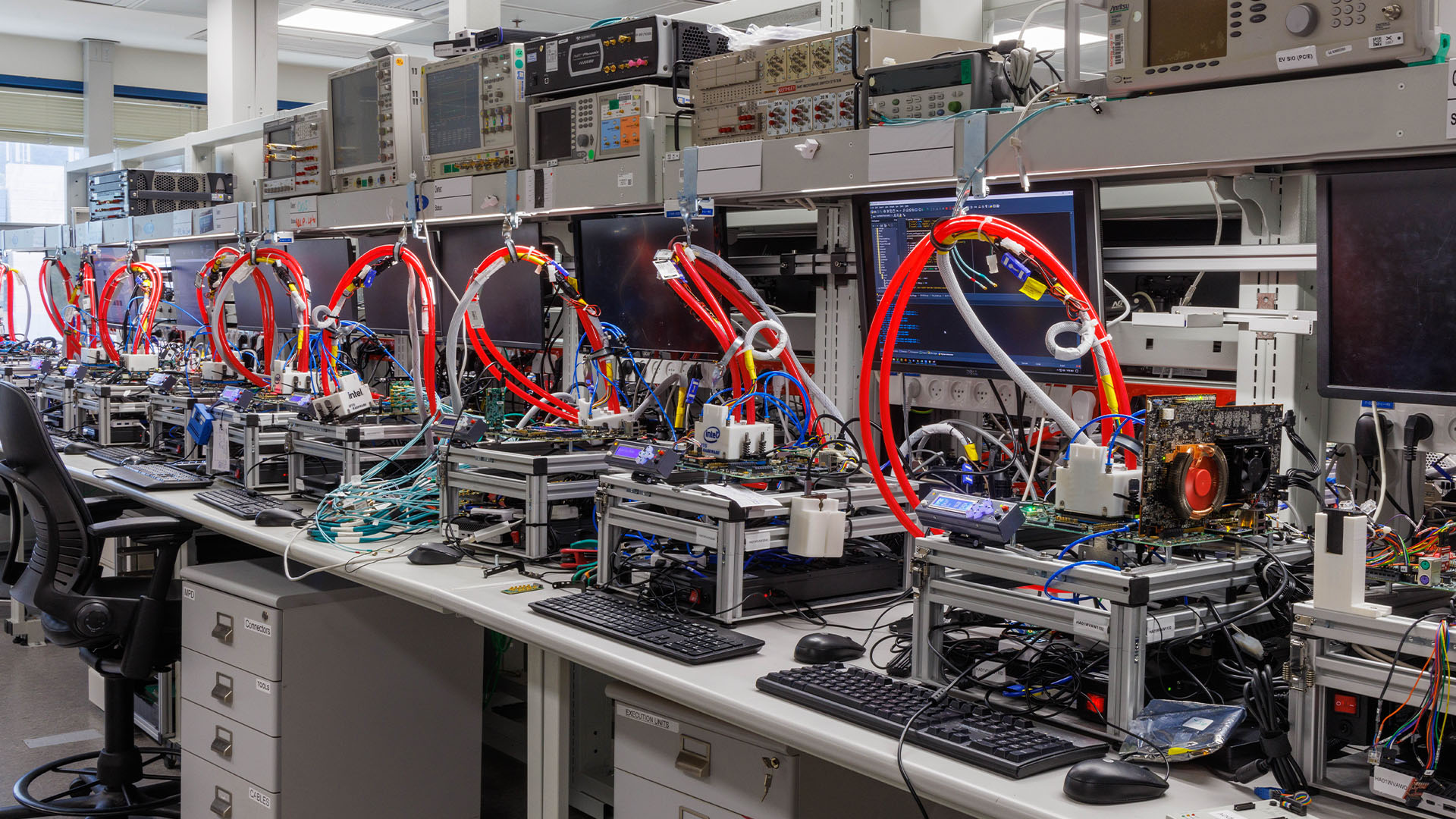I was recently lucky enough to be invited on a trip of a lifetime to see the current Intel semiconductor fabrication plant (fab) in Israel. It was the first time Intel had opened its doors to journalists and allowed them inside the sterile clean rooms of Fab 28. This Intel fab is where the company’s 12th-gen Alder Lake and 13th-gen Raptor Lake processors, such as the Intel Core i9-13900K, are currently being made on its 10nm manufacturing process.
The fab I visited is huge, but the company is building even bigger ones as it aims to boost its own production capabilities, as well as tap into the massive demand for microchips, offering its services to third parties. In fact, one such plant is already being built in Israel – this new plant (Fab 38) is where Intel Foveros CPUs will be made, which feature 3D chip stacking tech.
This technology is coming to mobile silicon first but will appear on desktop CPUs soon, and Intel is also increasing its production capacity both for itself and in order open up its services to third parties in the wake of massive demand for microchips. It’s an aggressive and innovative time for a company that has spent a lot of the last 15 or so years without CPU competition and languishing with incremental updates.
Anyway, back to the Fab 28 visit, which is where the current magic happens. Automated ceiling robots ferry silicon wafers around enormous rooms filled with machines in CD changer-style stacks, with these robots sporting evil robot-like red lights and whizzing around, all aware of each other and slowing or speeding up accordingly. On one particularly long stretch that seemed to go on for hundreds of meters, the line of red lights from dozens of robots coming toward me did make me want to run the other way.

As incredible as it was to be in the same room as seconds-old Alder Lake and Raptor Lake CPUs, the testing and quality-control areas were just as eye-popping, with hundreds of water-cooled testing stations ironing out bugs and issues on a massive scale.
CPUs are individually tested too, in a live binning process that sets voltages for each chip’s capabilities. If you own an Intel CPU, it will have been tested in one of these machines before it leaves the factory. Seeing this in action, with CPUs being picked up from trays and dropped into motherboard sockets, it didn’t surprise me that I’ve never had an Intel CPU die on me.

Other amazing rooms featured microscopic error-checking processes, which could zoom right into individual sections and traces on a CPU to see areas that needed corrections, and then fix them in real time to create a different stepping of a CPU. In the past, these revisions have occasionally improved performance or increased overclocking potential too.

Some of Intel’s latest 13th-gen Raptor Lake CPUs have really impressed us, with the Intel Core i5-13600K being listed on our guide to the best gaming CPU – you’ll get a big performance boost if you overclock the Core i5-13600K as well. The Intel Core i5-13400F is also our current favorite budget gaming CPU.
It’s an interesting time for Intel, with its hybrid core architecture, increased production capacity and plans for more innovative CPU designs in future, as well as fierce competition from a resurgent AMD. It’s mightily impressive to see the manufacturing process in action, and the next few years are going to be very interesting indeed.
